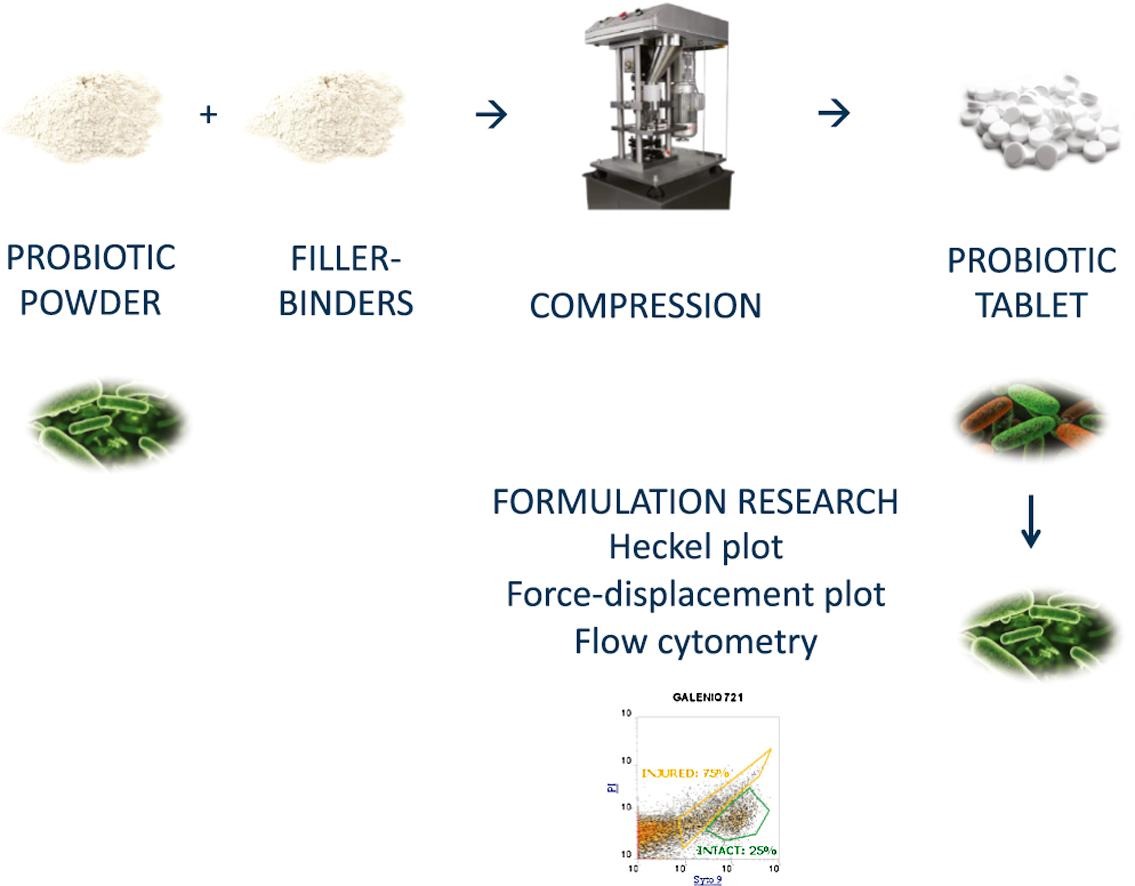Elastic recovery of filler-binders to safeguard viability of Lactobacillus rhamnosus GG during direct compression

Tablets are increasingly explored as dosage form for oral probiotics, especially for applications such as pharyngitis and dental health. In such tablets, the dry form increases the stability and the shelf life of the product. In addition, the probiotic cells are entrapped in the tablet matrix, which protects them against the environmental factors in the human body. However, the development of a probiotic tablet with an adequate number of viable cells remains a challenge due to the stress of the compression process.
The adverse conditions during production can damage the cells, which leads to a loss of viability and a failure of the therapy. This study aimed to investigate the effect of the compression behavior of filler-binders on the survival of Lactobacillus rhamnosus GG during tablet production. The probiotic tablets were manufactured by direct compression of a freeze-dried mixture of the model L. rhamnosus GG, a filler-binder and a suitable amount of lubricant. The compression behavior was determined by analyzing Heckel and force-displacement plots.
The results demonstrated that the elastic recovery of the filler-binder during decompression played a protective role in bacterial survival, reducing the compression stress during manufacturing. Consequently, the bacterial cells were less damaged, which resulted in a higher survival rate and a better stability during long-term storage. In conclusion, the elastic recovery of a filler-binder showed to be an important key in safeguarding probiotic cells during direct compression and storage.
Article Information: Author links open overlay panel Eline Byl, Sarah Lebeer, Filip Kiekens; Sciencedirect, 2019

